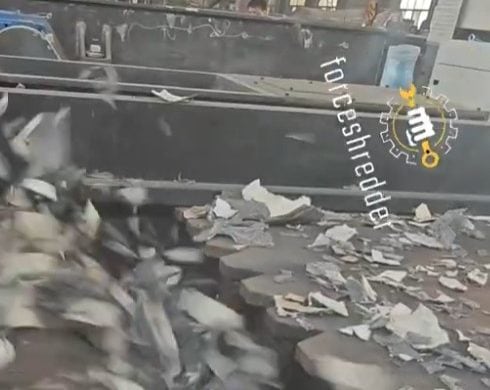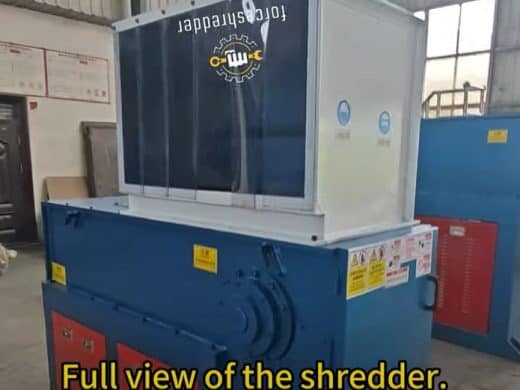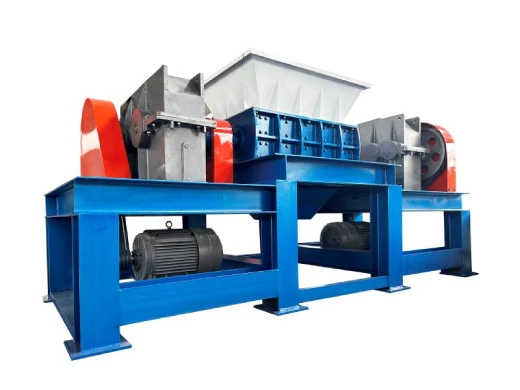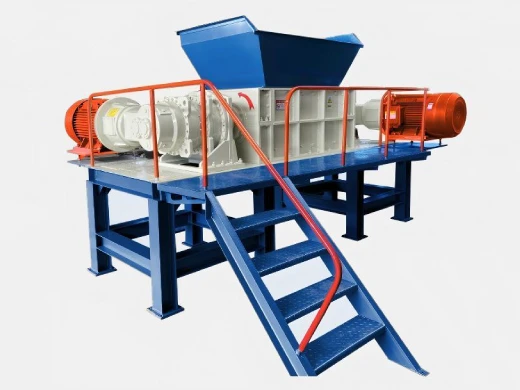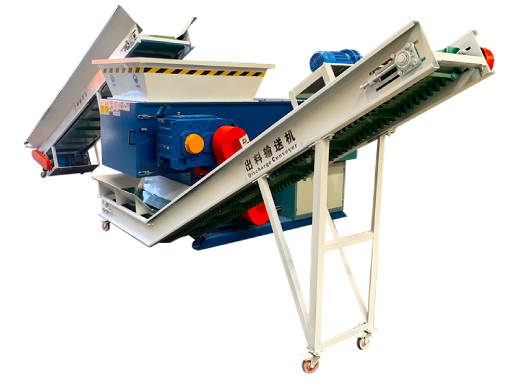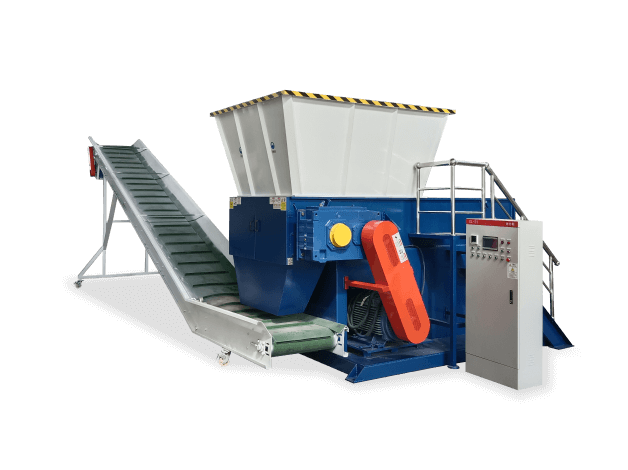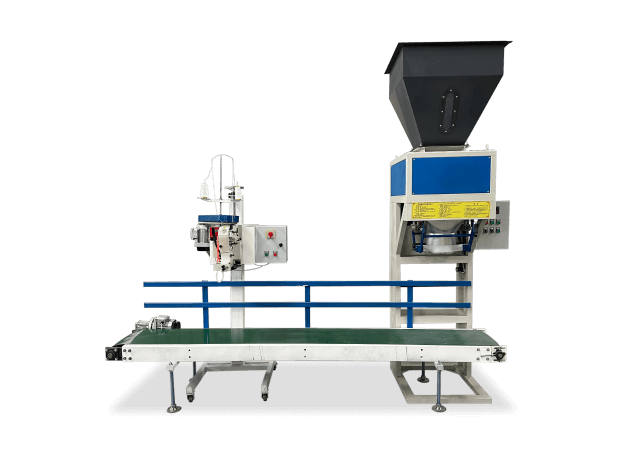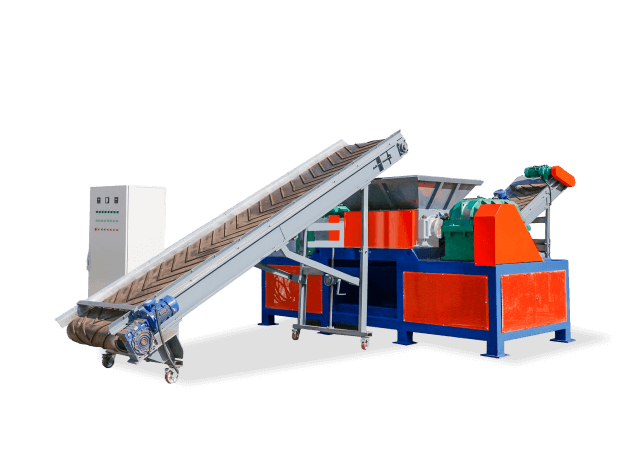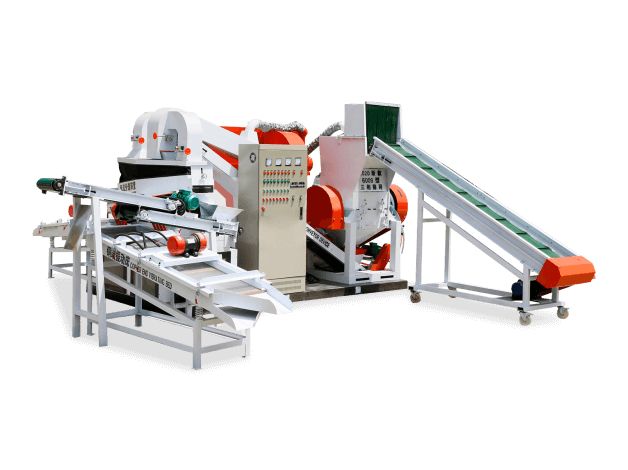Introduction to Single Shaft Shredder Capabilities
In today’s industrial landscape, waste management and material processing have become critical components of sustainable operations. Among the various shredding technologies available, single shaft shredders stand out as versatile workhorses capable of handling an impressive array of materials. These robust machines have evolved to become essential equipment in recycling facilities, manufacturing plants, and waste processing centers worldwide.
Single shaft shredders derive their name from their fundamental design – a system built around one rotating shaft equipped with cutting blades or hooks. This seemingly simple configuration belies the machine’s sophisticated engineering, which enables it to tear, shear, and reduce materials through a combination of cutting, ripping, and grinding actions. Unlike their dual-shaft counterparts that primarily use shearing action, single shaft shredders employ a tearing mechanism that makes them particularly effective for certain material types.
The secret to their versatility lies in their customizable design. Manufacturers can tailor various components – from the rotor configuration and blade design to the screen size and motor power – to optimize performance for specific material streams. This adaptability allows single shaft shredders to process everything from delicate plastics to tough metal components, making them indispensable across numerous industries.
Common Materials Processed by Single Shaft Shredders
Plastics and Polymers
The plastics recycling industry heavily relies on single shaft shredders for their ability to handle diverse polymer types. These machines excel at processing:
- Rigid plastics: Thick-walled items like PVC pipes, ABS fittings, and polypropylene containers are no match for a properly configured single shaft shredder. The tearing action effectively reduces these materials to uniform chips ideal for recycling.
- Film and flexible packaging: While challenging for some shredder types, single shaft units with specialized hook-style blades can process plastic films, shopping bags, and flexible packaging without wrapping around the rotor.
- Composite materials: Plastic-wood composites, fiber-reinforced polymers, and multi-layer packaging materials can all be processed, though blade maintenance may need adjustment for these abrasive materials.
For plastic processing, the ability to control particle size through interchangeable screens is particularly valuable, as different recycling processes require specific feedstock sizes.
Wood and Organic Materials
Single shaft shredders demonstrate remarkable effectiveness with various wood products:
- Pallet and demolition wood: These shredders can reduce wooden pallets, construction debris, and demolition waste to valuable biomass fuel or mulch material.
- Tree trimmings and green waste**: Landscaping waste, branches, and brush are efficiently processed, with some models capable of handling material up to several inches in diameter.
- Manufacturing wood waste: Off-cuts, sawmill residues, and woodworking byproducts can be shredded for particleboard production or other secondary uses.
The slow-speed, high-torque operation of many single shaft shredders makes them ideal for wood processing, as it minimizes dust creation and reduces energy consumption compared to hammer mill alternatives.
Paper and Cardboard
In the recycling of paper products, single shaft shredders offer distinct advantages:
- Corrugated cardboard: These machines can process large volumes of OCC (old corrugated containers) efficiently, creating material suitable for repulping or packaging applications.
- Mixed paper streams: Newspapers, magazines, office paper, and other fiber-based materials are reduced to consistent sizes for recycling.
- Secure document destruction: Many document destruction services utilize single shaft shredders for their ability to thoroughly destroy sensitive materials while maintaining fiber quality for recycling
The controlled shredding action helps preserve fiber length, which is crucial for maintaining paper quality in recycled products.
Challenging Materials That Single Shaft Shredders Can Handle
Metals and Electronic Waste
While not typically the first choice for primary metal reduction, single shaft shredders play important roles in metal processing:
- Light metal components: Aluminum extrusions, thin gauge steel, and non-ferrous metals can be processed, especially when mixed with other materials.
- Electronic waste (e-waste): These shredders are valuable in the initial size reduction of computers, appliances, and other electronic equipment prior to more specialized separation processes.
- Metal-plastic composites: Items like electrical cables, automotive wiring harnesses, and electronic enclosures can be processed to liberate materials for separation.
For metal applications, shredders are often equipped with specially hardened blades and may incorporate features like hydraulic pusher plates to feed material consistently into the cutting zone.
Textiles and Fibers
The textile recycling industry benefits from single shaft shredders’ ability to process:
- Post-industrial textile waste: Fabric scraps, carpet remnants, and manufacturing byproducts can be reduced for use as stuffing, insulation, or raw material for recycled fibers.
- Used clothing: When garments are beyond reuse, shredding prepares them for the “rag” industry or fiber reclamation processes.
- Carpet and rug recycling: Specialized shredders can handle the tough fiber and backing materials in carpeting, separating components for recycling.
The tearing action of single shaft shredders is particularly effective for fibrous materials that might wrap around equipment in other shredder types.
Rubber and Elastomers
Single shaft shredders perform well with various rubber products:
- Tire processing: While not typically used for primary tire reduction, they are valuable in secondary size reduction of tire chips or processing sidewall material.
- Industrial rubber waste: Conveyor belts, gaskets, seals, and other rubber products can be shredded for reuse in molded products or as rubberized asphalt additives.
- Shoe and footwear recycling: The combination of materials in footwear (rubber soles, fabric uppers, foam inserts) can be processed for material recovery.
Rubber processing often requires specially designed blades that can withstand the material’s resilience and may incorporate cooling systems to prevent overheating during shredding.
Factors Affecting Material Processing Capability
Machine Configuration Variables
Several design elements determine what materials a single shaft shredder can effectively process:
- Rotor design: Solid, welded rotors provide maximum durability for tough materials, while staggered disc designs offer flexibility for mixed material streams.
- Blade type and arrangement: Hook-style blades excel at tearing fibrous materials, while straight blades provide cleaner cuts for plastics and wood.
- Screen selection: Interchangeable screens control output particle size, with larger openings for rough shredding and smaller holes for fine granulation.
- Drive system: Hydraulic drive systems offer variable speed and overload protection advantages for challenging materials compared to fixed-speed electric drives.
- Hopper and feed system: For difficult-to-feed materials, hydraulic pushers or conveyor feed systems ensure consistent material presentation to the rotor.
Material Characteristics That Impact Shredding
Understanding material properties helps match them to shredder capabilities:
- Hardness: Materials are measured on scales like Mohs or Shore to determine appropriate blade hardness and machine power requirements.
- Tensile strength: High-strength materials may require slower shredding speeds or specialized blade geometries.
- Abrasiveness: Highly abrasive materials like fiberglass or mineral-filled composites necessitate more frequent blade maintenance or specialized wear protection.
- Flexibility: Materials that bend rather than tear may require pre-cutting or specialized blade designs to prevent wrapping.
- Moisture content: Wet materials may need different handling than dry, particularly in terms of discharge and screen cleaning systems.
Operational Considerations
Proper operation significantly impacts what materials can be successfully processed:
- Feed rate control: Consistent, appropriate feeding prevents overload and ensures optimal shredding conditions.
- Maintenance schedules: Different materials require varying maintenance intervals for blades, bearings, and other wear components.
- Cleaning requirements: Some materials (like sticky plastics or wet organics) may need more frequent cleaning to prevent buildup.
- Safety protocols: Certain materials may produce dust, sparks, or other hazards requiring special safety measures.
Industry-Specific Applications
Recycling Facilities
In MRFs (Materials Recovery Facilities), single shaft shredders handle:
- Mixed recyclables: Pre-sorting size reduction for more efficient separation downstream.
- Bulky waste: Large items like furniture or appliances are reduced for component recovery.
- Contaminated streams: Materials with mixed compositions can be processed prior to cleaning and separation.
Manufacturing Operations
Manufacturers use these shredders for:
- Reject and off-spec product processing: Immediate recycling of production waste back into the manufacturing process.
- Packaging material reduction: Processing of shipping materials and product packaging for disposal or reuse.
- Confidential product destruction: Secure destruction of proprietary products or components.
Waste-to-Energy Plants
For biomass and waste fuel production:
- RDF (Refuse Derived Fuel) production: Shredding municipal solid waste to create consistent fuel pellets.
- SRF (Solid Recovered Fuel) preparation: Processing commercial and industrial waste into high-quality alternative fuels.
- Biomass preparation: Size reduction of wood and agricultural waste for energy production.
Conclusion: Maximizing the Potential of Your Single Shaft Shredder
The true capability of a single shaft shredder extends far beyond basic waste reduction. These machines represent a convergence of mechanical engineering and material science, capable of transforming nearly any waste stream into manageable, valuable material. From everyday plastics and paper to challenging rubber and composite materials, proper machine selection and operation can unlock remarkable processing potential.
When considering a single shaft shredder for your operation, focus not just on the machine’s specifications, but on how its design features match your specific material characteristics. Partnering with an experienced shredder manufacturer can help identify the ideal configuration for your needs, ensuring optimal performance and return on investment.
As material streams continue to evolve in complexity, single shaft shredders will undoubtedly continue to adapt, maintaining their position as one of the most versatile and indispensable tools in modern material processing and recycling operations.


